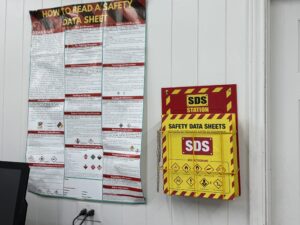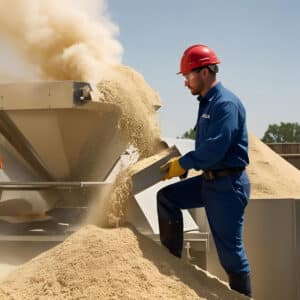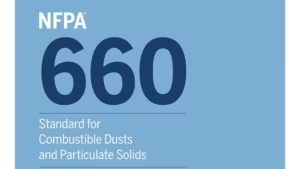We also offer
What Is a Hazard Identification Review?
A Hazard Identification Review is a systematic process used to identify potential risks in industrial operations, especially where hazardous materials and complex procedures are involved. These reviews aim to proactively detect conditions that could lead to fires, explosions, toxic releases, or equipment failures.
Using tools such as checklists, What-If analyses, and facility walkthroughs, safety teams assess raw materials, processes, and environmental conditions. The goal is to uncover risks before they escalate into incidents.
Why Are Hazard Identification Reviews Important?
These reviews are essential for:
-
Preventing safety incidents before they happen
-
Supporting compliance with industry regulations
-
Guiding process design and operational improvements
-
Strengthening overall risk management strategies
Hazard Identification Reviews are often required by regulatory bodies and are key to maintaining a proactive safety culture.
A Collaborative, Multidisciplinary Process
These reviews bring together professionals from engineering, operations, maintenance, and safety. Brainstorming sessions allow each expert to contribute insights, making sure every risk is considered from multiple angles.
This team approach ensures no hazard is overlooked, while fostering a shared sense of responsibility for process safety.
Steps to Conduct a Hazard Identification Review
-
Define Objectives – Set clear goals for the review and determine which process or area it will cover.
-
Build a Multidisciplinary Team – Include experts in process engineering, safety, operations, and maintenance.
-
Gather Data – Collect key documents like P&IDs, SDSs, incident reports, and operating procedures.
-
Choose Review Methods – Use techniques like checklists, What-If analysis, or HAZOP as appropriate.
-
Facilitate Review Sessions – Identify hazards through structured team discussions.
-
Document Hazards – Record potential risks, causes, and possible consequences.
-
Prioritize Risks – Assess severity and likelihood to focus efforts on the most critical hazards.
-
Develop Mitigation Strategies – Recommend controls, procedural updates, or staff training.
-
Implement Recommendations – Integrate safety measures into operations.
-
Review Regularly – Reassess as processes change or after an incident.
-
Train Personnel – Ensure staff understand new risks and safety controls.
-
Monitor and Follow Up – Track actions taken and evaluate effectiveness.
Why Perform Hazard Identification Reviews?
Conducting regular Hazard Identification Reviews helps organizations:
-
Proactively manage risks before incidents occur
-
Protect personnel, assets, and the environment
-
Comply with safety regulations (e.g., OSHA, EPA)
-
Support continuous improvement in safety programs
-
Build a strong safety culture and raise hazard awareness
Why Choose Prime Process Safety Center
At Prime Process Safety Center, we provide expert-led Hazard Identification Reviews designed for your specific operations.
What Makes Us Different:
-
Specialized Process Safety Expertise
-
Proven Experience with Complex Hazards
-
Tailored Review Methods for Your Facility
-
Structured, Methodical Risk Assessments
-
Multidisciplinary Insight
-
Clear, Actionable Risk Mitigation Plans
-
In-Depth Knowledge of Safety Regulations
-
Ongoing Support After the Review
-
Staff Training and Awareness Programs
-
Thorough Documentation for Compliance & Safety Planning
FAQ
1. What is a Hazard Identification Review?
A Hazard Identification Review is a systematic process used to identify potential hazards associated with a process or system. It involves reviewing the process, equipment, materials, and environment to identify any risks that could lead to accidents or incidents.
2. Why is HIR important in the process industry?
HIR is crucial because it helps prevent accidents by identifying and mitigating risks before they lead to incidents. This proactive approach enhances safety, protects employees and the environment, and can save costs associated with accidents and downtime.
3. When should a Hazard Identification Review be conducted?
HIR should be conducted at various stages, including during the design phase of a new process, after significant modifications to existing processes, after an incident, or as part of a regular safety review cycle.
4. Who should be involved in the HIR process?
A multidisciplinary team should conduct HIR, including process engineers, safety professionals, operations personnel, and maintenance staff. This diversity ensures a comprehensive understanding of the process and its potential hazards.
5. What methodologies are commonly used in HIR?
Common methodologies include What-If Analysis, Checklists, Hazard and Operability Study (HAZOP), , and Layer of Protection Analysis (LOPA).
6. How does HIR differ from a risk assessment?
HIR focuses on identifying hazards, while risk assessment evaluates the likelihood and severity of the consequences of these hazards. HIR is often a step in the broader risk assessment process.
7. What are the common outcomes of a HIR?
Outcomes can include identification of potential hazards, recommendations for risk mitigation measures, improvements in process design, and development of emergency response plans.
8. How is the effectiveness of HIR measured?
Effectiveness can be measured by the thoroughness of hazard identification, the implementation of recommended actions, and a reduction in incident rates.
9. What are some challenges in conducting HIR?
Challenges include ensuring a comprehensive and unbiased review, keeping up-to-date with technological and process changes, and integrating findings into operational practices.
10. Can HIR be applied to any industry?
While HIR is most commonly associated with the process industry, its principles can be applied in any industry where there is a need to identify and manage operational hazards.














